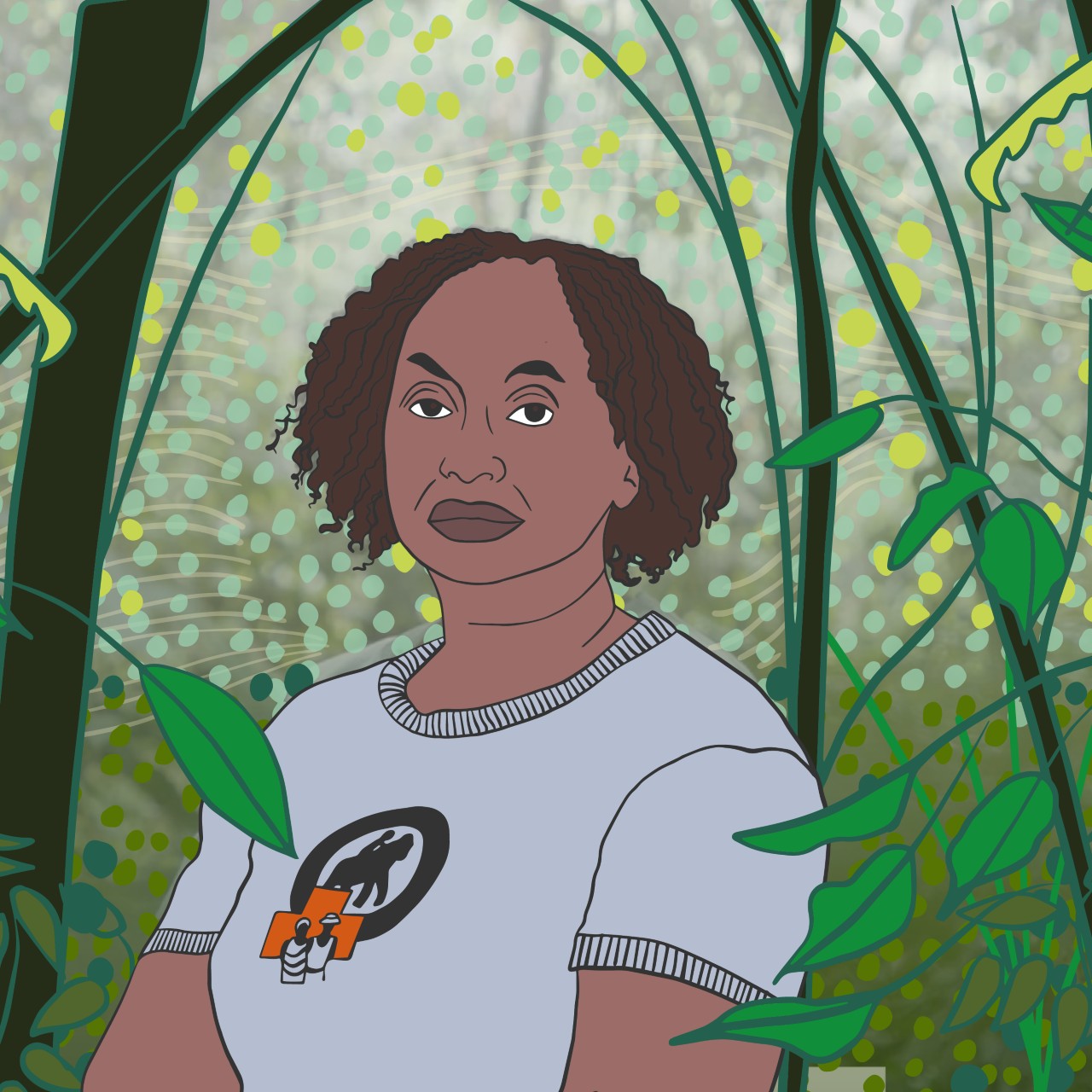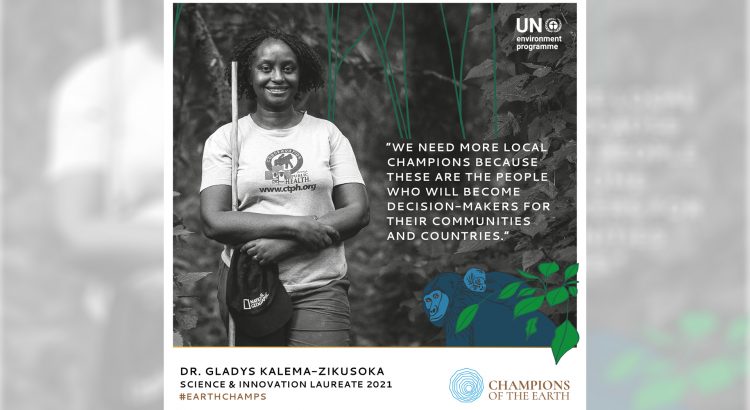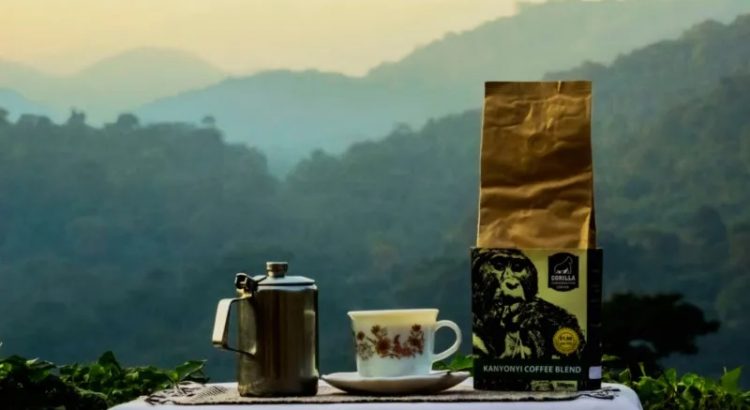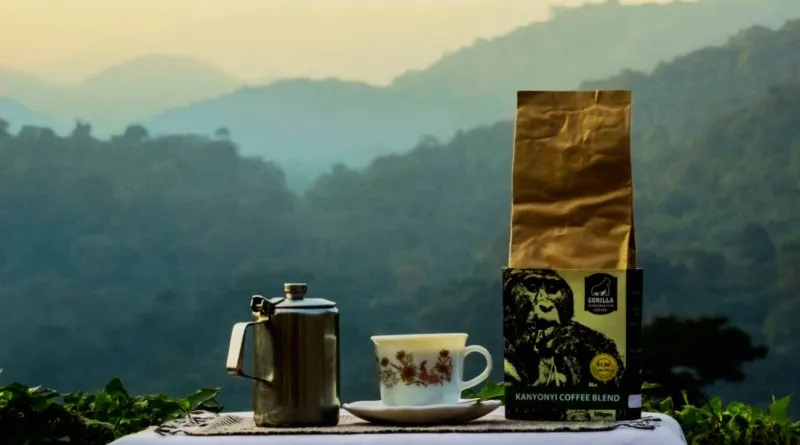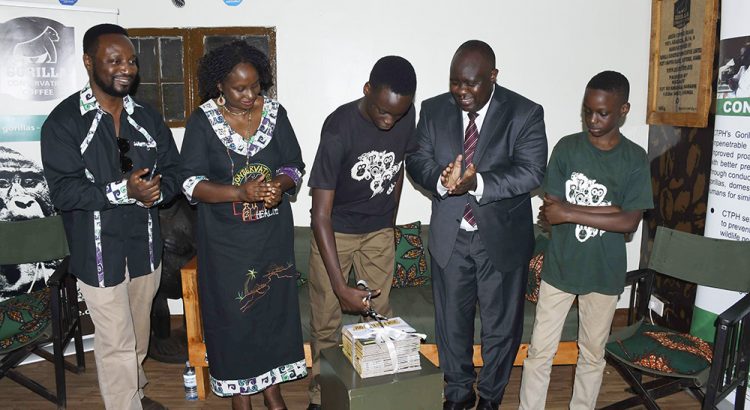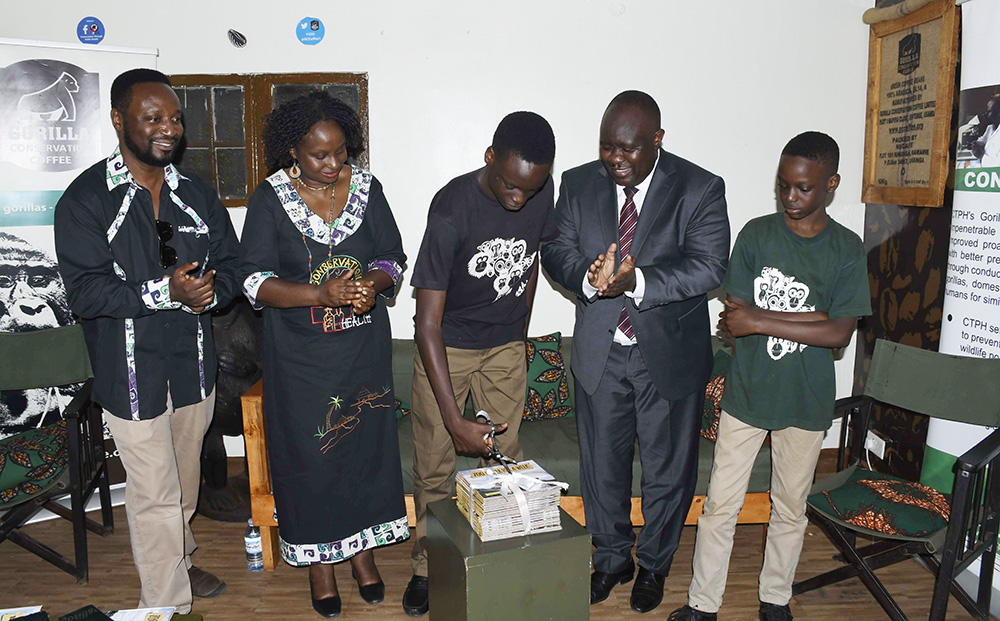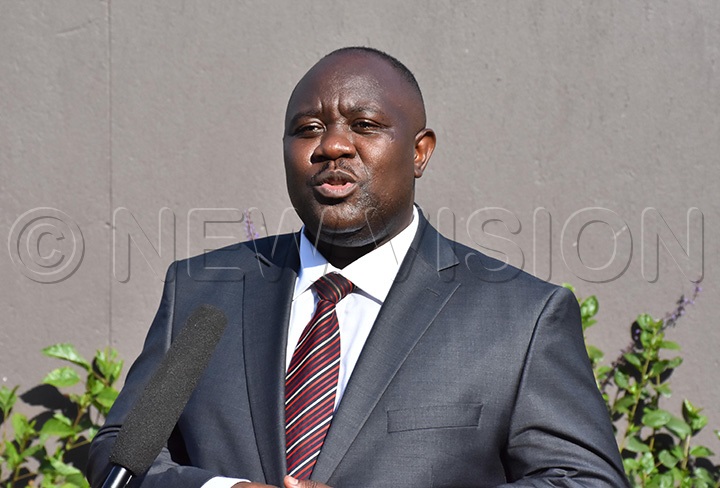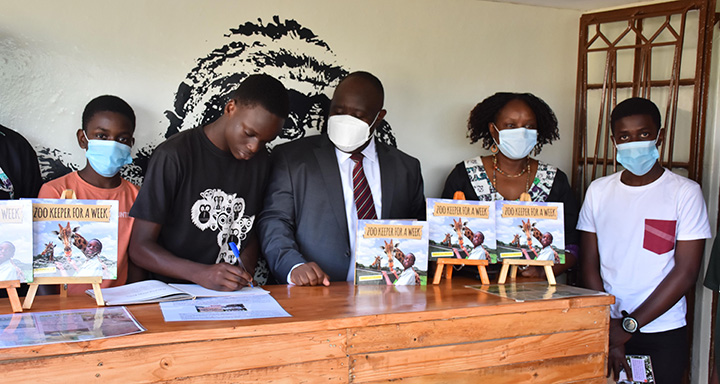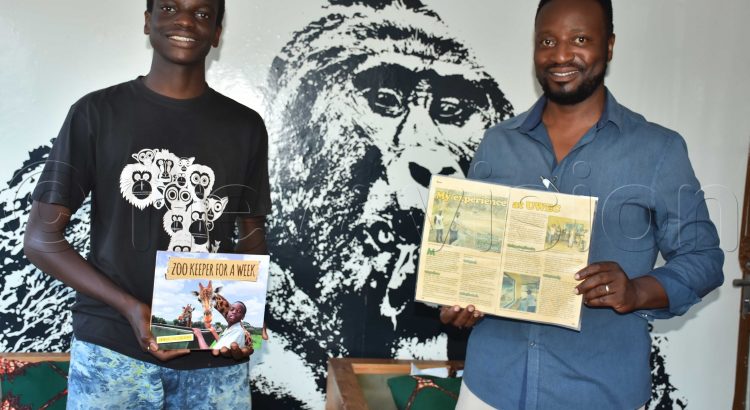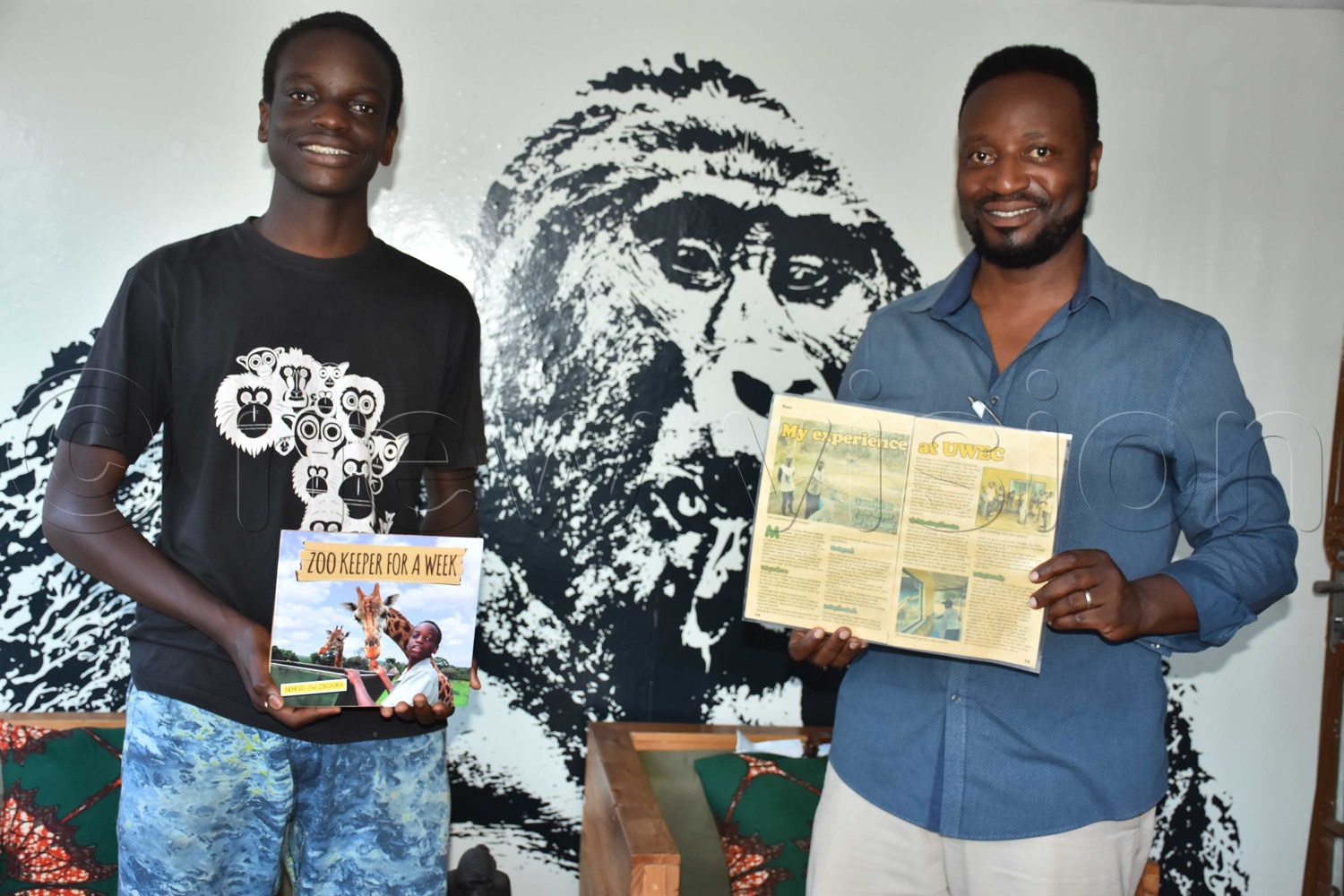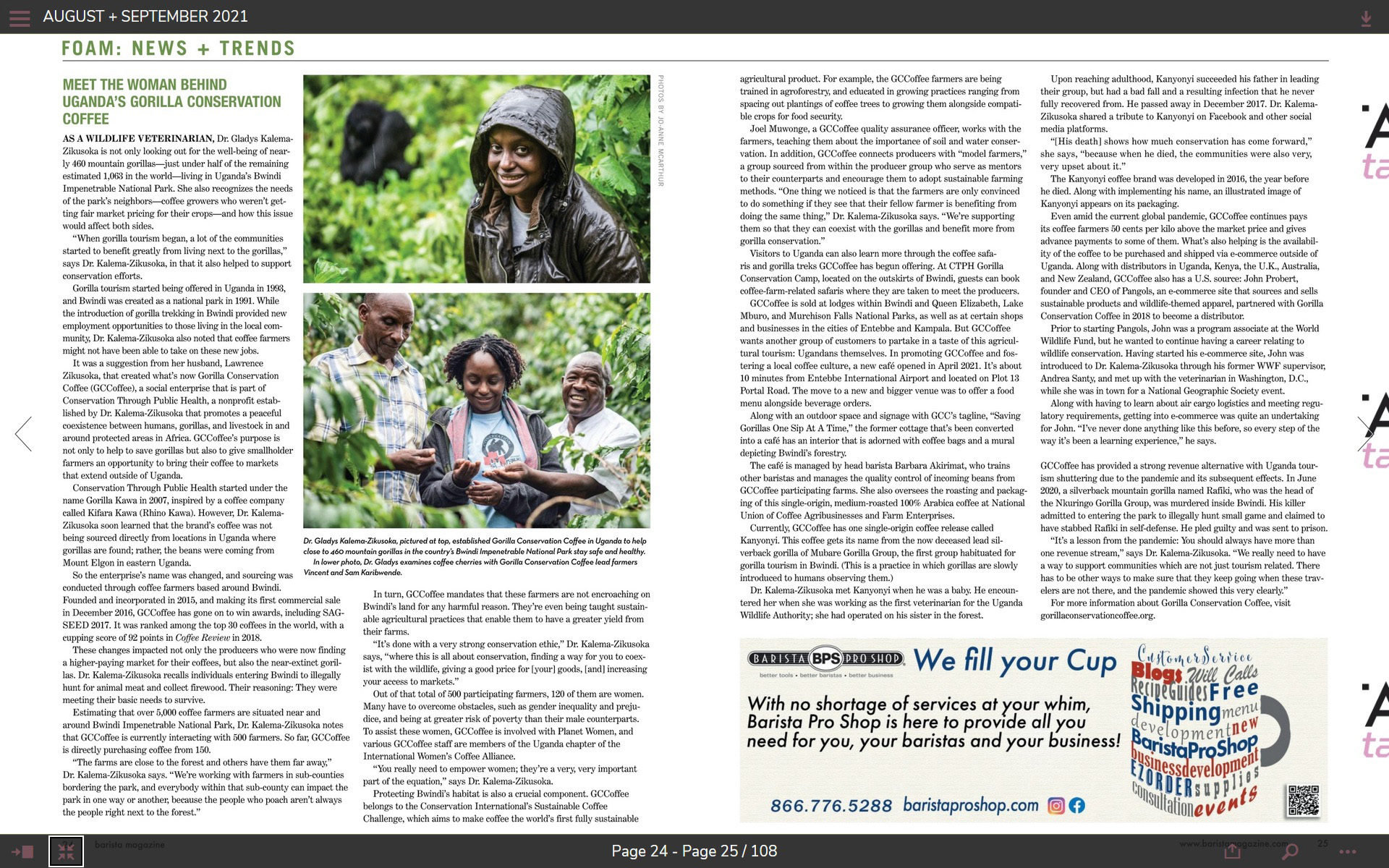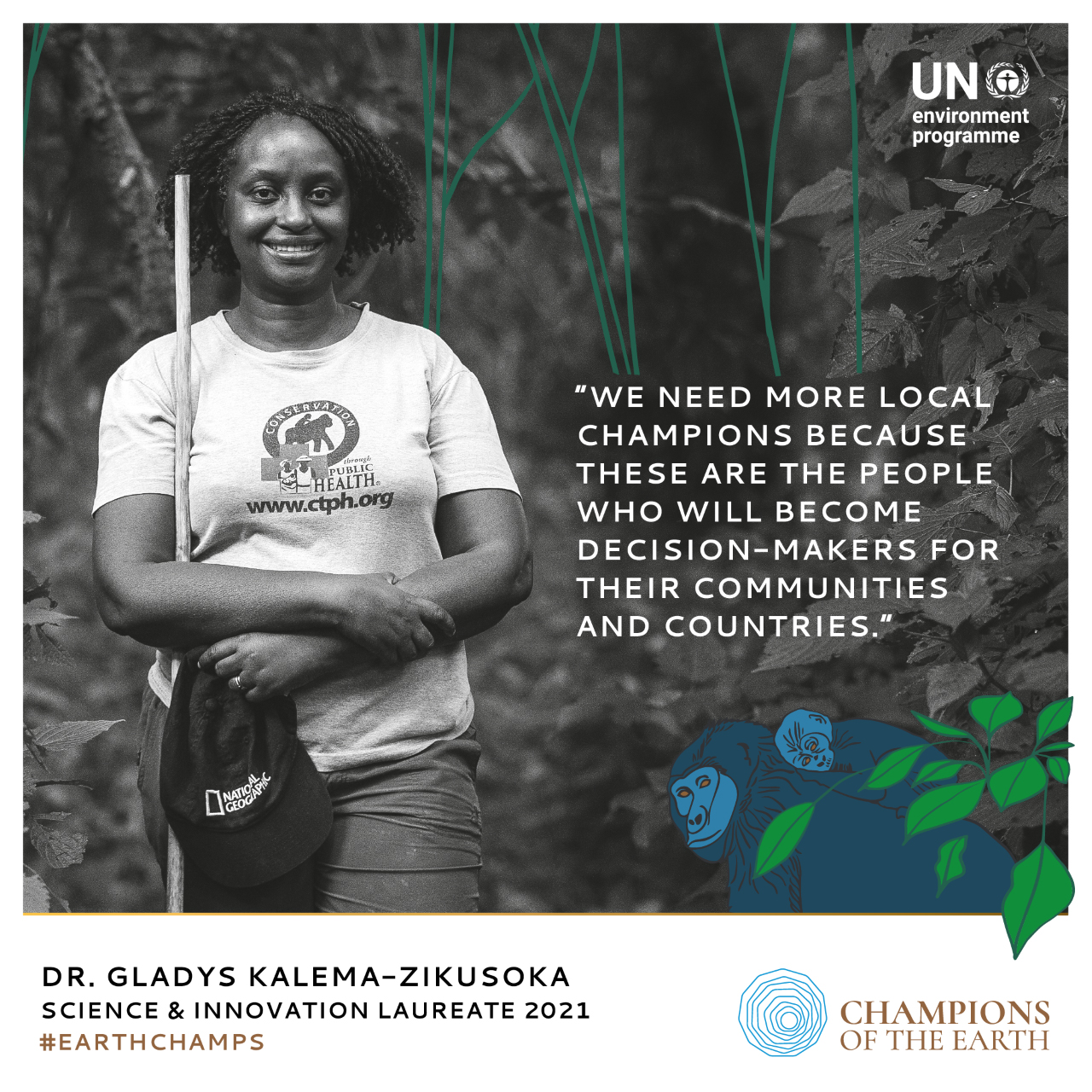
SOURCE : UNEP
It might have been the neighbor’s monkey which came downstairs to join her for piano lessons, or the wildlife club that she started in primary school in Kampala, Uganda. But from a very early age, Dr. Gladys Kalema-Zikusoka, this year’s Champion of the Earth for Science and Innovation, knew she wanted to work with animals.
“Basically, pets were my first friends,” said Kalema-Zikusoka, a wildlife veterinarian by training who would go on to spend three decades helping to safeguard some of the world’s rarest primates, including endangered mountain gorillas. Much of her work has been in impoverished East African communities that border protected areas, where she has helped improve healthcare and create economic opportunities, turning many locals into partners in conservation.
“Gladys Kalema-Zikusoka is a pioneer in community-led wildlife conservation,” said Inger Andersen, the Executive Director of the United Nations Environment Programme. “In many places, economic pressures can cause friction between humans and animals. But her work has shown how conflict can be overcome when local communities take the lead in protecting the nature and wildlife around them, creating benefits for all species.”
Supported by her family, Kalema-Zikusoka embarked on a global educational adventure, earning degrees in Uganda, the United Kingdom and the United States. In her early 20s, she returned to Uganda for an internship in, what would eventually become the locus of her future work, Bwindi Impenetrable National Park located in the country’s remote and impoverished southwest.
It was the beginning of gorilla tourism in Bwindi and Kalema-Zikusoka, then a young vet student, found that conservation wasn’t a simple process. “There were people focused on tourism and on community conservation,” she recalled. “There were wardens and rangers and the Peace Corps and lodges and by the end of my time there, I understood how complex tourism and conservation were.”
Kalema-Zikusoka would become the first-ever wildlife veterinarian for the Uganda Wildlife Authority. There, she began to apply what was a new approach to working for wildlife – one that centred on improving lives and livelihoods in the remote villages that surrounded Bwindi.
“(That allows) humans to enjoy a better quality of life and be more positive about conservation. When you show people that you care about them and about their health and well-being, you help them better co-exist with wildlife.”
That would become the guiding principle behind the organization that Kalema-Zikusoka founded nearly 20 years ago: Conservation Through Public Health. It has expanded its model of village health to protected areas near Virunga National Park in Democratic Republic of Congo, as well as to two non-protected areas of Mount Elgon National Park in Uganda. In addition to promoting hygiene and good sanitation practices, the teams also support family planning.
Appreciating the interplay between humans and wildlife, and the spread of zoonotic diseases between the two populations, was critical for Kalema-Zikusoka as she took on a greater role in providing guidance to the Ugandan government’s COVID-19 pandemic response.
Global lockdowns hobbled the tourism industry in Uganda’s southwest, forcing some to return to one particularly problematic vocation: poaching. That threatened painstaking advances made in restoring Bwindi’s mountain gorilla population, whose numbers have steadily increased to more than 400.
This represents nearly half of the population of the endangered species still living in the wild.
Conservation Through Public Health provided fast-growing crops to families, allowing them to at least grow enough food to feed themselves. They also left the community with an important message. “We told them, you have to continue to protect wildlife because it’s helped you this much. This is your future.”
Conflict between people and animals is one of the main threats to the long-term survival of some of the world’s most iconic species, according to a recent report from World Wide Fund for Nature and the UN Environment Programme (UNEP). In many countries like Uganda, the conflict, coupled with health risks of COVID-19 has further imperiled endangered species.
Kalema-Zikusoka worked with national park staff to encourage visitors and rangers to wear masks, not just to prevent transmission amongst themselves of COVID-19, but also to protect the gorillas, who can be infected by human-borne pathogens. That work would evolve into protocols designed to limit the spread of zoonotic diseases – contagions that jump between humans and animals – and training for local health workers designed to combat COVID-19. Now 21 countries in Africa – including the 13 states that are home to dwindling populations of great apes – have signed on to the guidelines.
“We are really adapting the model of preventing zoonotic disease to COVID-19 prevention,” said Kalema-Zikusoka. Conservation Through Public Health also looks at ways to diversify income streams for local communities sharing space with wildlife. The organization’s latest project is Gorilla Conservation Coffee, a social enterprise. Staff teach farmers near Bwindi how to grow top-notch coffee beans while conserving water and using organic fertilizers. “We are now working towards impact investment,” said Kalema-Zikusoka. “It’s all about the importance of sustainable financing for conservation.”
Recognized globally for her work, Kalema-Zikusoka, says that she hopes she will inspire young Africans to choose careers in conservation. “There is a lack of local representation among conservationists. Not many are from the places where endangered animals are found,” she said. “We need more local champions, because these are the people who will become decision-makers for their communities and countries.”
The United Nations Environment Programme’s Champions of the Earth and the Young Champions of the Earth recognize individuals, groups and organizations whose actions have a transformative impact on the environment. Presented annually, the Champions of the Earth award is the UN’s highest environmental honour.
The United Nations General Assembly has declared the years 2021 through 2030 the UN Decade on Ecosystem Restoration. Led by the United Nations Environment Programme (UNEP) and the Food and Agriculture Organization (FAO) of the United Nations together with the support of partners, it is designed to prevent, halt, and reverse the loss and degradation of ecosystems worldwide. It aims at reviving billions of hectares, covering terrestrial as well as aquatic ecosystems. A global call to action, the UN Decade draws together political support, scientific research, and financial muscle to massively scale up restoration. Visit www.decadeonrestoration.org to learn more.
